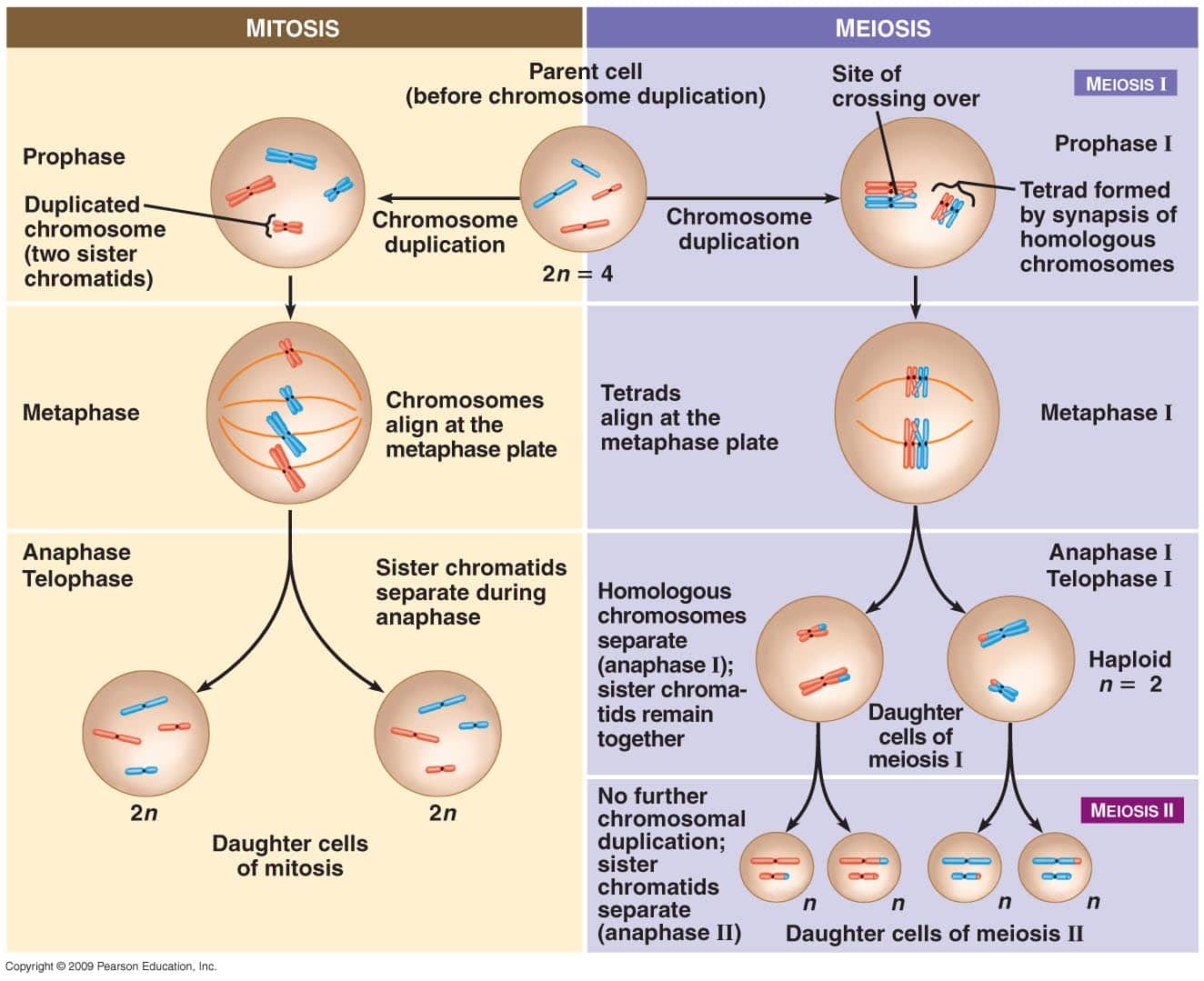Question #30271
1 Answer
Jan 9, 2018
Explanation:
In meiosis, usually seen in the production of sex cells (sperm and ova), one cell produces four 'daughter' cells, each with half the DNA of the 'parent' cell.
In the first stage of meiosis (Meiosis I), the parent cell divides into two cells, each containing only one strand of the original DNA (half the number of chromosomes) - this is the chromosome reduction phase.
In the second stage of meiosis (Meiosis II), these two haploid (containing half the original DNA) cells divide using a mitotic process to form four haploid cells.

